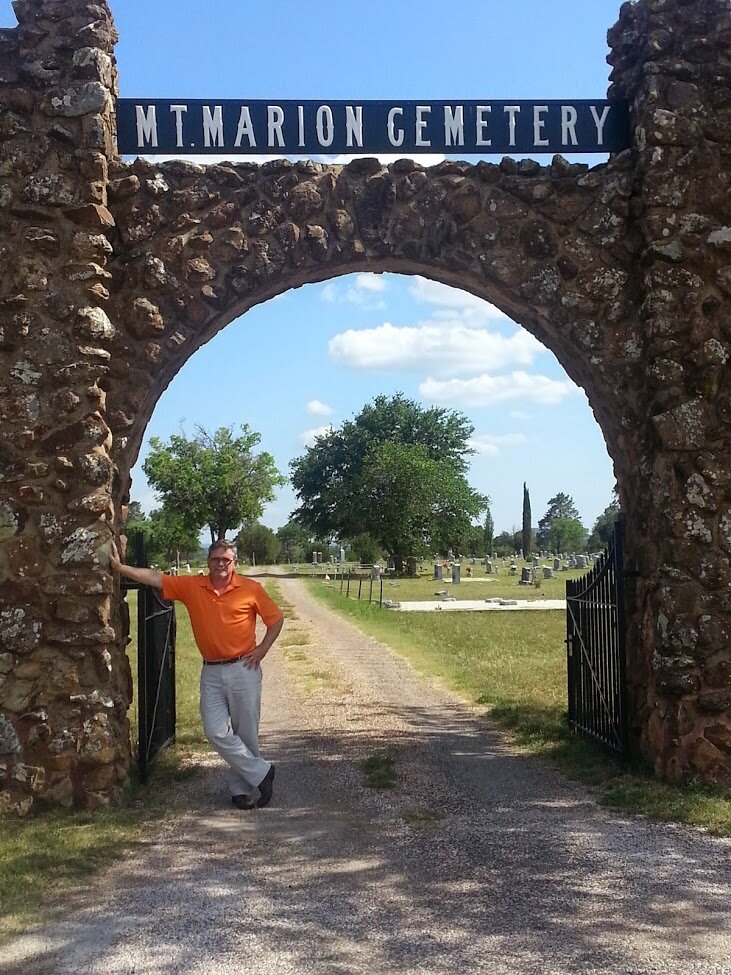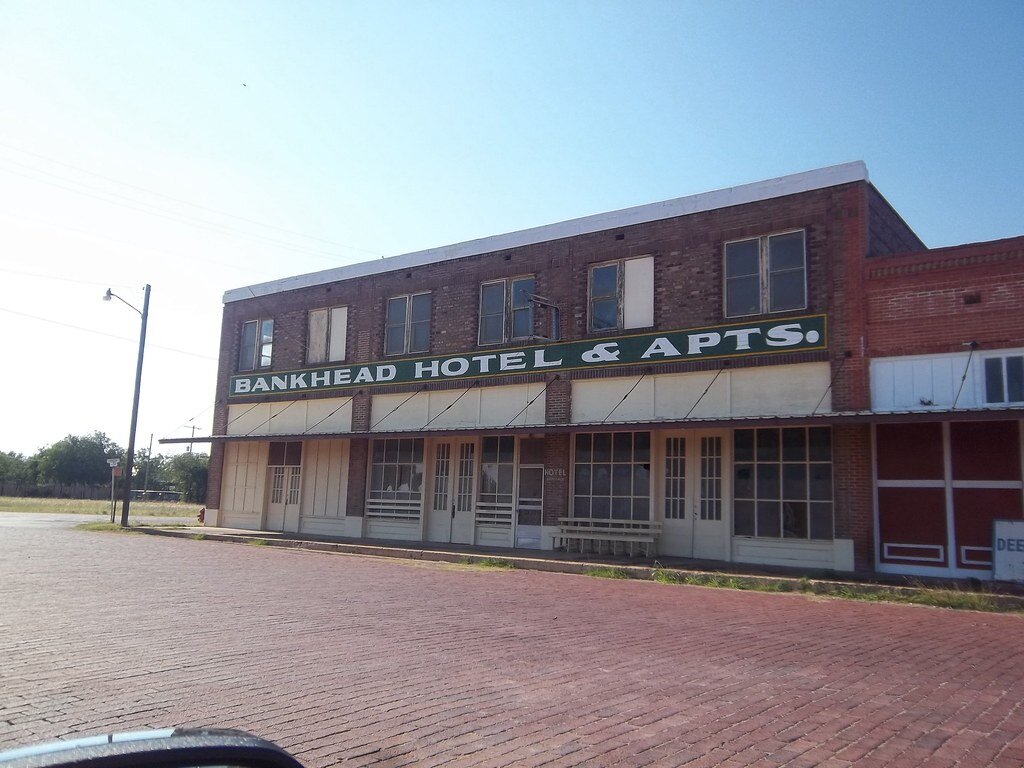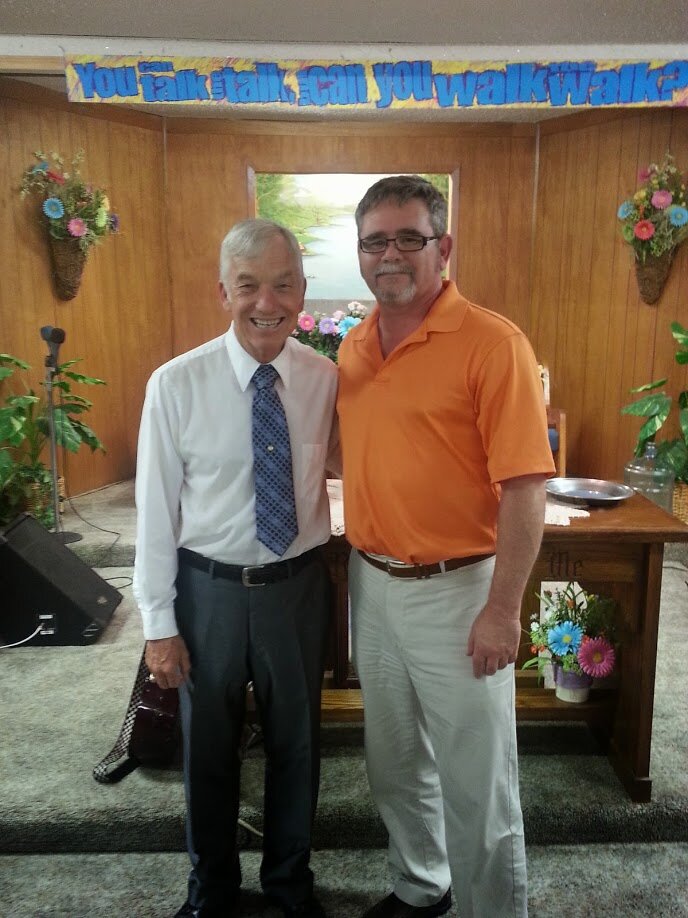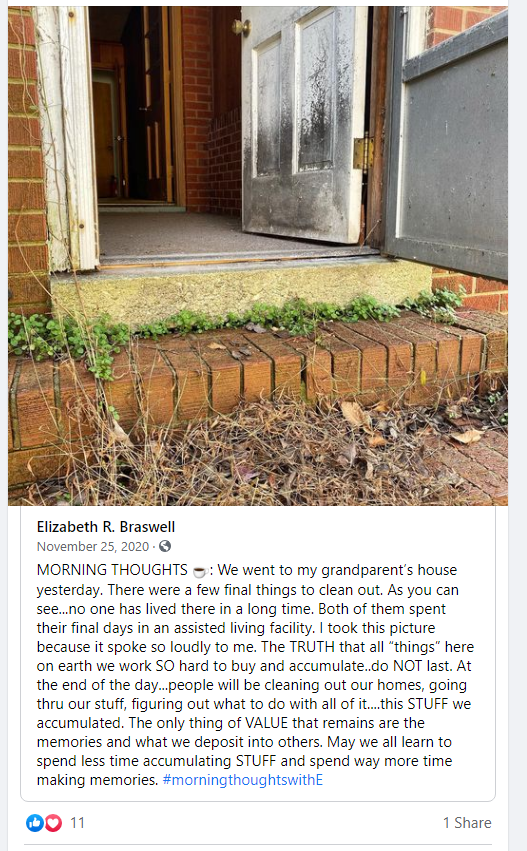Somehow, my family managed three times in my youth to live with a graveyard either adjacent to our property or directly across the street. Consequently, I spent more time, I suspect, than most adolescent boys mingling with the dead, reading names and tributes on tombstones, and mentally reconstructing the lives and times of the men and women – and children – who physically inhabit the city of the dead.
Mt Marion Cemetery, Strawn, TX, Father’s Day 2013
To date, I have written but one book, The Preacher’s Kid, a semi-autobiographical coming-of-age tale of life in small-town Texas in the 1970s. The watershed moment in that book takes place in a graveyard. Believe me when I say that part of the story is way more fact than fiction.
On Father’s Day, 2013, my daughters wanted to take a field trip to Strawn, Texas, where the legend of The Preacher’s Kid was born. (OK, a legend in my own mind, I admit, but a legend nonetheless.)
Trinity Baptist Church, Strawn, TX, Father’s Day 2013
Right across the street from town cemetery, the Trinity Baptist Church has stood as a beacon of life and bastion of hope for well more than a half-century. My Dad was the pastor of the little congregation for a few years in the early 1970s. We lived in a mobile home, which was parked on the church’s property.
The Mt. Marion Cemetery was a beautiful and haunting place, with its stone fence and wrought iron gates. In its confines, tombstones dating to the late 1800s mark the final resting places of people whose lives were at least to some degree spent among the gnarly Mesquite trees, Junipers, grayish sand, rugged mountains (hills, really), rattlesnakes, roadrunners, locusts, and horned toads populating that space where Central, North, and West Texas intersect.
On that Father’s Day field trip, I walked among the same dead who remained just as dead as they had been when I visited them in the early 70s. Back then, I spent many a Summer afternoon daydreaming of Civil War soldiers, Wild West gunslingers, and railroad engineers.
Strawn was established in 1880 in conjunction with the emergence of the Texas and Pacific Railway. In 1915, Palo Pinto county belched its first liquid gold, also known as crude oil. just outside Strawn.
In 1891, the population was 400.
When we arrived in 1970, the population had swelled and then subsequently shrunk to right at 700. By then, much of the downtown was shuttered. Booming businesses had long since been abandoned. In 1970, The town had the feel of a near-miss, an almost boomtown, hanging on for dear life. The handfuls of people born there either move off to experience the larger world beyond Strawn’s borders or they stay there and don’t.
In 2013, when my family and I visited Strawn and I recounted the harrowing tales of the two-plus years I spent there, the population was still around 700 souls and the feel of the place was about the same as I remembered. It was a Sunday afternoon, so, after a visit to the graveyard, I walked across the street and into the little church where Dad held forth the gospel to find the man who succeeded him preparing for the evening worship service. Michael Orsini, a gentleman’s gentleman, a gentle man, gracious, kind, intelligent, and fortified with the kind of commitment that will keep a man engaged with the same 30-or-so-member congregation for four decades (and counting at this writing).
Pastor Mike Orsini and me, 2013
Brother Orsini and Mary’s Cafe, famous statewide for its chicken-fried steak, which we visited for an early dinner, were about the only signs of life on that early summer afternoon. Strawn was as endearing and enduring and dead still as it had ever been – an Americana time capsule a couple of miles north of Interstate 20.
There on the southern edge of the little Texas treasure sits Mt. Marion Cemetery, where deeds were done by my buddies and me and where the dead are still dead.
“And as they were afraid, and bowed down their faces to the earth, they said unto them, Why seek ye the living among the dead?”
It was an honest mistake these women made. They were heart-broken. The One in Whom they had placed all their hope and trust had been brutally murdered before their eyes. Their protective, mothering instincts told them that the least they could do was to make sure the body of Jesus was properly cared for. They had come to express their love. They had come to grieve their loss.
But they had come to the wrong place! This was Resurrection morning. Jesus Christ no longer occupied the city of the dead. He lived.
No.
He lives.
This is the single most significant fact for humanity”Jesus Christ conquered death. Jesus Christ lives.
So why do people still seek the living among the dead?
Jesus said, “I am the way, the truth, and the life” (Jn.14:6).
No person can come to God except through Him. No person can experience spiritual life apart from Him. No person can find any other way to Heaven.
Some seek life by rummaging among the tombs of dead religious leaders. They cling to the teachings and mandates of men whose bodies are in varying degrees of decay. Others look for the secret to life by rifling through the teachings of humanists. They come to conclusions that point them in every direction except to the empty tomb.
And then there are the multitudes who live as though the secret of life could be acquired or achieved. They mistakenly believe that the value of their existence is determined by the things they accumulate or accomplish. A bigger house. A better car. My name in lights. A million dollars. Surely the answer is in here somewhere.
I found the following little story on a friend’s Facebook timeline. I think it fits!
We have explored a few ways people seek the living among the dead.
Where are you looking? Why would you assume that you could find the answer to life by rummaging through things that are dead or dying? Get out of the graveyard! There are no answers there.
Come to the One Who lives to give you life.





